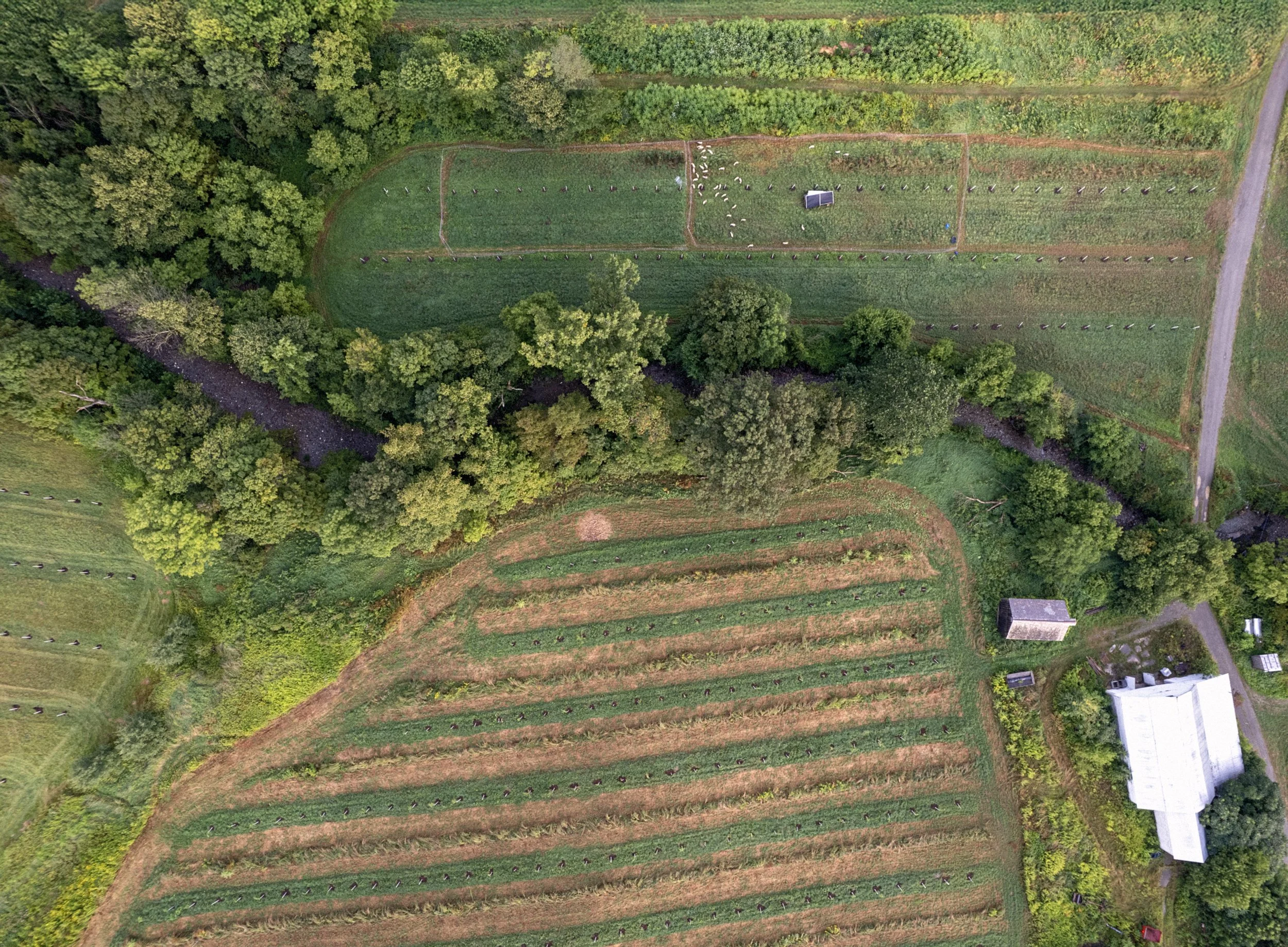Field Research
Expanding the Vision for Northeast Agroforestry
In 2019, we started establishing chestnut silvopastures because we saw chestnuts as a “ready to go” proof-of-concept that viable farm and food businesses could be built around temperate agroforestry in the Northeast. Obviously, if we want to make agroforestry a real contributor to the region’s food system, it will take more than chestnuts. There are a number of agroforestry crops and systems that show great potential, but require significant field research and industry development in order to be effectively commercialized and scaled up.
Starting in 2023, Breadtree (with a coalition of partners) is conducting crop development research for a number of “new” perennial staple crops and agroforestry systems. For each of these focus areas, we and our partners are developing and proving genetics, agricultural management practices, agronomics, harvest and post harvest processing, and market development strategies:
Hickory Oil
We are expanding our production and breeding orchards for bitternut and hybrid hickory oil, including the best oil hickory parents from the selection programs of Yellowbud Farm and Alex Tanke. Hickory oil is a delicious, nutritious “olive oil alternative” from a native keystone of the Eastern Woodlands. Hickory oil offers opportunity as both an orchard crop (like olive) and a forest product (like maple), with the potential to “reshore” a substantial percentage of the region’s oil consumption. Our work with hickory is in collaboration with a cohort of other agroforesters across the Northeast, instigated by Yellowbud Farm.
Seaberry
We are establishing our first commercial seaberry plantings, for juice and oil. Seaberry is an nutrient-dense “citrus alternative” that grows on vigorous, disease-resistant shrubs well-adapted to our cold Northern climate. These will be the largest commercial seaberry plantings in the U.S., and will test and demonstrate a number of novel interplanting schemes with tree crops like chestnut and hickory.
Acorn Flour
We’re conducting genetics research and breeding/production trials for red oak and white oak groups, focused on acorn flour. For millennia, acorn flour has been a keystone food for many native peoples of North America, and we believe there is under-appreciated opportunity to develop oaks as a viable perennial staple crop.
Intensive Silvopasture
We are developing field trials for livestock systems that aim to create ideal environments for the animals that live there, by harnessing the enormous productivity of trees for the purpose of growing animal feed (in the form of perennial beans, fruits, nuts, seeds, and edible leaves). These systems offer the potential to enhance animal welfare, improve feed quality and habitat, sequester more carbon, reduce methane emissions, improve water quality, and increase meat yields and nutritional quality.
Chestnut Flour
Today’s orchard chestnut genetics already make great flour. But we see opportunities for further improvement. In the U.S., almost all orchard chestnut parents have been selected for fresh eating traits. But in the mountains of Europe — where peasants lived off dried chestnuts for centuries — people instead selected the trees whose nuts were best suited for drying and milling. We are developing a distinct, pollen-isolated hybrid chestnut population focused on optimizing flour production traits. One of the goals of this project is to produce a less sweet (and thus more versatile) chestnut flour.
Innovating in “the details”
We are always seeking opportunities to increase ecological function and the performance of our pastures and orchards:
We’re conducting a series of trials (building on the work of the Jena Experiment and Dr. Christine Jones) focused on increasing the diversity of the orchard understory and the fungal communities in our soils. These trials aim to optimize for tree health, soil health, soil de-compaction, balanced forage for ruminants and honeybees, and habitat for birds, insects, and other forms of wildlife.
We’re experimenting with novel cycling strategies in our groundcover management, enhancing habitat for beneficial birds and insects while suppressing habitat for rodents that predate young trees. These approaches are inspired by the work of Helen Atthowe.
We’re experimenting with utilizing ferments and other above-ground inoculants to support microbial diversity. This includes trials with AgriSea kelp biostimulants, farmed sustainably in New England coastal waters using the Greenwave methodology.
We’re developing and implementing remineralization programs to help post-dairy soils transition into productive organic orchard silvopastures.
We’ve integrated a tree-observation/data-tracking software that allows everyone on our team to track in-field observations to each of the nearly 20,000 trees we are stewarding.
Experimental groundcover cycling strategy, maintaining phenological diversity and creating multistrata structure within a species-diverse herbaceous layer. The taller middle stripes provide habitat for birds and nectar flow for pollinators, while allowing seed-heads to mature. The green stripes immediately around the trees are already providing good regrowth and blossoms from lower clovers. And the just-mowed brown stripes (brown from thatch drying out and returning to the soil) will show excellent regrowth for sheep fodder in 3-5 weeks.
Complex herbaceous layer + multiple cycles of disturbance = staying green in a drought!










